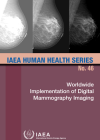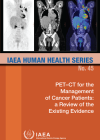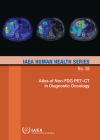Cancer diagnosis frequently requires imaging studies that in many cases use small amounts of radiation. Procedures such as X-rays; computed tomography (CT); magnetic resonance imaging (MRI); positron emission tomography (PET) and single-photon emission computed tomography (SPECT) are important in clinical decision-making, including therapy and follow-up.
Cancer diagnosis
Imaging tests – taking pictures of the inside of the body – are of pivotal importance in the diagnosis and management of cancer patients. The use of diagnostic imaging is one of the first steps in the clinical management of cancer. Diagnostic radiology and nuclear medicine studies play an important role in the screening, staging (finding out the extent of the cancer, such as how large the tumour is, and if it has spread beyond the primary site), follow-up, therapy planning, evaluation of therapy response and the long-term surveillance of patients.
A reliable diagnosis is necessary to identify the site of the primary tumour, and to assess its size and dissemination to surrounding tissues and to other organs and structures in the body. An appropriate diagnosis is of paramount importance in deciding the therapeutic approach to take and establishing the prognosis.
Early diagnosis
The chance of cure for a cancer patient strongly depends on the stage of the disease at the time of diagnosis. When it is diagnosed at an early stage – before it is too large or has spread – a tumour is more likely to be successfully treated. The early detection of cancer hinges on many factors: the screening of at-risk population; the ability of patients and health professionals to recognise warning signs; and the use of diagnostic methods to differentiate between cancer and other processes, as well as to precisely determine the location and the extension of the tumour. Modern diagnostic imaging technologies provide the ability to discriminate tissues down to a millimetre, using magnetic resonance imaging (MRI) and X-ray computed tomography (CT), while the range of positron emission tomography (PET) and single photon emission tomography (SPECT) are a few millimetres.
Anatomy versus function
Diagnostic imaging can be divided into two broad categories: those methods that define very precisely anatomical details and those that produce functional or molecular images.
The first method (using CT and MRI) can provide exquisite details on lesion location, size, morphology and structural changes to surrounding tissues, but only delivers limited information as to the tumour’s functioning.
The second method (using PET and SPECT) can give insight into the tumour physiology down to the molecular level, but cannot provide anatomical details.
Combining these two methods enables the integration of anatomy and function in a single approach. The introduction of such “hybrid” imaging has allowed for the characterization of tumours in all stages.
Role of nuclear techniques
The use of different diagnostic imaging techniques that employ various forms of radiation such as X-rays (CT and radiography) and gamma rays (PET and SPECT) has revolutionized the management of cancer patients. Technologies such as positron emission tomography (PET) that rely on the use of radiopharmaceuticals represent a breakthrough in the medical practice due to their capability to decipher, without opening the human body, what is happening at molecular level in a certain cell or tissue. The information obtained from these techniques has enabled significant improvements in patient management and the proper distribution of healthcare resources.








